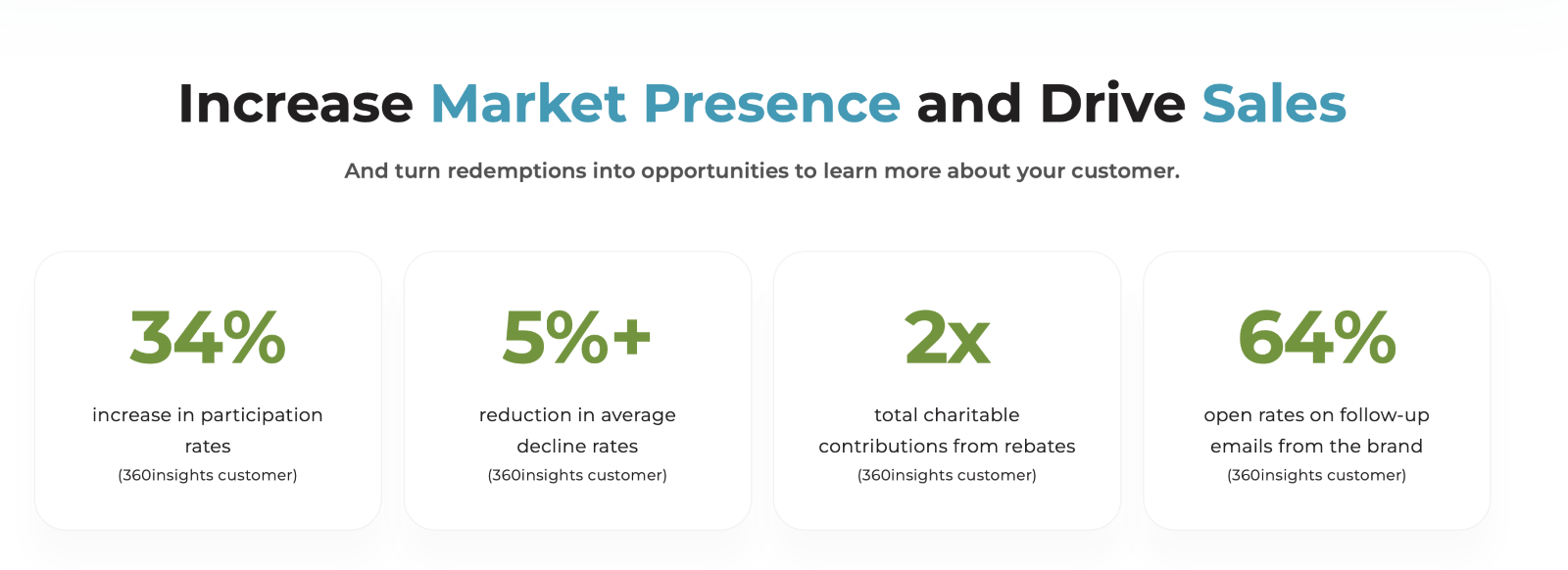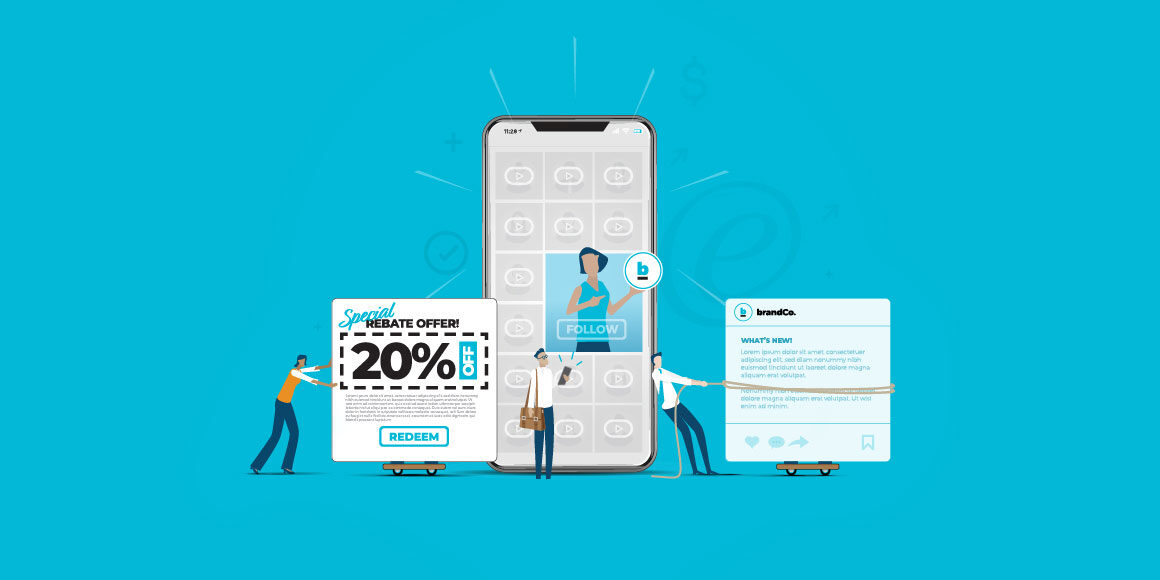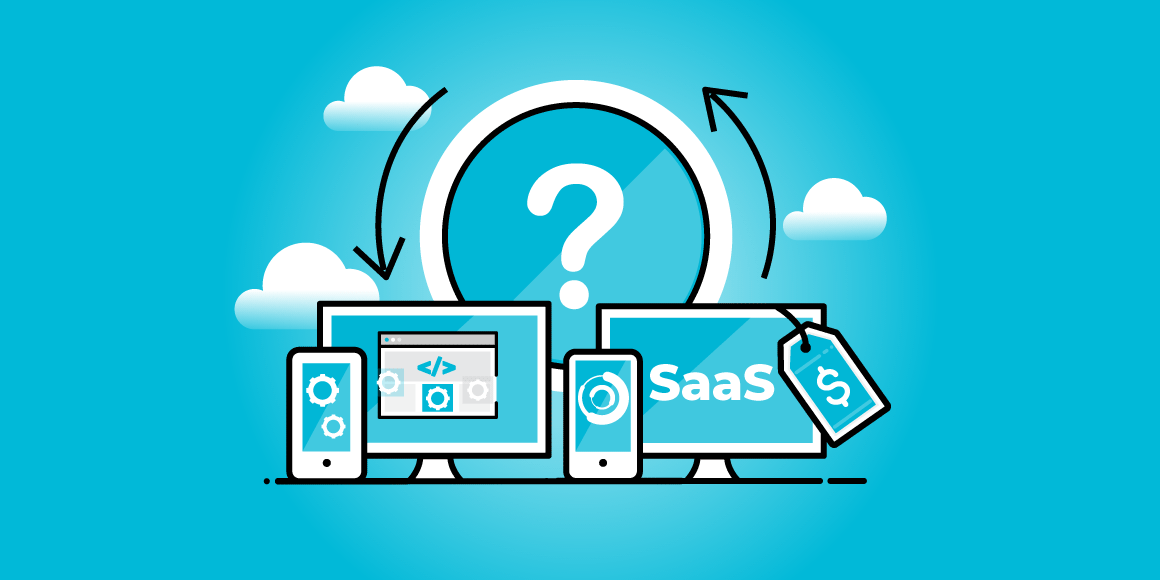Having no line of sight into an end deal is a frustrating predicament for manufacturers. You know that, while you’re never directly interacting with a consumer, there are things you can do to influence that final sale. Is there information the installation specialist could have used to upsell a customer? Are there seasonal indicators that could have been used for better marketing? The answer just may be in the incentives you choose.
The lack of insight and influence can feel like an insurmountable roadblock, one that can only be solved by crossing your fingers and hoping that the distributor undertakes this marketing lift. So instead of actively working to help increase close rates, you’re stuck wondering "what if?”
Well, it turns out you can not only help, but play a pivotal role in end-user sales. How? By tapping into your data and influencers.
In this blog, we’re covering:
- Step #1: The Power of the Data Point
- Step #2: Engage Your Influencers
- How To Start Influencing End Sales
Let’s dive in!
Step #1: The Power of the Data Point
Consumer incentive marketing involves actively pushing products or services to a target market through various promotional efforts. This can include advertising and sales promotions such as consumer rebates or cashback programs.
Consumer inventive marketing can be an effective way for manufacturers to impact end sales, as the manufacturer can influence purchase behavior by incenting the consumer.
Here’s a real-life example:
Fisher & Paykel, a luxury home appliances manufacturer, utilized consumer rebates as part of their incentive program to gather data and improve sales. They partnered with 360insights to quickly deploy the program, which aimed to drive more foot traffic into showrooms and increase wallet share from dealers. Consumers were encouraged to purchase additional components and accessories. When an eligible stock-keeping unit (SKU) was added to the program portal within the designated timeframes, the claim was automatically processed and rewards in the form of cash-back or rebates for consumers were presented.
While the immediate results were impressive (sales across store accounts increased by up to 200% in some cases and improved business efficiencies), rebates like the ones used by Fisher and Paykel have a second, arguably more valuable purpose: data collection.

A manufacturer could run a consumer rebate or cashback program similar to Fisher and Paykel’s that requires consumers to enter an email to qualify for the rebate. That contact information can be used to:
- Send surveys asking about product satisfaction, features desired, price sensitivity, etc. This provides direct customer feedback to help guide product development and marketing.
- Send personalized product recommendations based on past purchases or expressed interests. This allows more targeted marketing of new or related products.
- Send customers early access to information about upcoming product releases and availability. This builds excitement and gets customers engaged with the brand.
- Send special discount offers or coupon codes to encourage repeat purchases. This helps build brand loyalty.
- Send requests for product reviews and testimonials. Customer endorsements provide powerful social proof and word-of-mouth promotion.
- Send customers links to provide ratings and feedback on websites. This helps improve search rankings and identify strengths/weaknesses.
Yes, the ROI from increased sales alone is enough to make consumer rebates an attractive marketing strategy for manufacturers. But truly savvy manufacturers recognize that the impact can extend far past the cash register: The real power of the rebate is the data point.
Step #2: Engage Your Influencers
So, what do you do with that data point once you have it? For example, if 40% of customers that got a consumer rebate on new heat pumps say that they’re also interested in air purifiers, how can that manufacturer turn that information into increased sales? Well, that insight can be used to influence the end consumer via industry influencers.
In today’s market where a recommendation from the right person is as good as gold, influencer marketing is particularly powerful (and no, we don’t mean social media influencers a la Instagram or Tik Tok). Influencers are people who interact with and, well, influence the purchase decisions of the end consumer. For example, the person responsible for product installation is in a position to upsell or cross-sell the consumer at the actual point of sale. Influencers in the manufacturing space include:
- Contractors and Installers: These influencers are professionals who specialize in the installation and implementation of products. They have expertise in using and working with specific tools, equipment, or materials. Collaborating with contractors and installers can help manufacturers showcase the ease of use, efficiency, and quality of their products in real-world scenarios.
- Trade Associations and Organizations: Industry-specific trade associations and organizations play a vital role in connecting manufacturers with various influencers within the industry. They often have members who are key decision-makers, contractors, installers, and showroom designers. Partnering with these associations can provide manufacturers with access to an influential network of professionals who can promote their products.
- Showroom Designers: Showroom designers specialize in creating aesthetically appealing and functional spaces where manufacturers can display their products. Working with showroom designers allows manufacturers to collaborate on product displays, demonstrate the features and benefits of their offerings, and create immersive experiences for potential customers.
- Architects and Design Professionals: Architects and design professionals have a significant influence on the selection and specification of products in construction and renovation projects. Partnering with architects and design professionals can help manufacturers gain visibility and preference for their products during the planning and design phases of projects.
- Product Reviewers and Industry Publications: Influential bloggers, online reviewers, and industry publications dedicated to the manufacturing industry can provide valuable exposure for manufacturers. Getting positive reviews, mentions, or features in these outlets can significantly impact the perception and adoption of a manufacturer's products.
If the manufacturer has passed along that data from their consumer rebate survey, the installer (or influencer) knows to bring up that manufacturer’s air purifier while installing a heat pump. Not only can this result in additional sales, but it also increases brand recognition for the manufacturer — the consumer no longer sees the heat pump as a standalone product but rather one of many HVAC offerings from this now-familiar brand.
Home security company Ring does this especially well. Ring has cultivated strong relationships with installers to ensure smooth and efficient installation of their products, while also providing opportunities for upselling to end users.
One way they achieve this is through partnerships with professional installation services such as Amazon Home Services and OnTech Smart Services. These partnerships enable customers to have their Ring devices fully installed by certified professionals, alleviating any installation concerns or difficulties. During the installation, the installers have the opportunity to upsell additional Ring products or features to the end users.
This not only increases sales for Ring but also enhances the overall customer experience by offering additional security options or expanding their smart home ecosystem. Through these strong relationships with installers, Ring effectively leverages their expertise and trusted position to provide a comprehensive and upselling-driven installation experience for end users.
How To Start Influencing End Sales
Here’s how you can get started.
Start a consumer rebates or cashback program
To set up a consumer rebates or cashback program, manufacturers can follow these actionable steps:
- Identify Goals: Begin by clearly defining the objectives of your consumer rebates program. Determine what specific outcomes you want to achieve, such as increasing sales, attracting new customers, or gaining valuable consumer insights.
- Partner with 360insights: Reach out to 360insights, a leading provider of rebate technology and services. Collaborate with their team to understand how their platform can support your goals and align with your brand. This partnership will enable you to leverage their expertise in consumer rebates and push marketing strategies.
- Design the Program: Work closely with 360insights to design a consumer rebates program that aligns with your brand image and resonates with your target market. Consider factors such as rebate amounts, eligibility criteria, redemption methods, and promotional messaging. Ensure that the program is attractive and compelling for consumers.
- Integrate Technology: Implement 360insights' rebate technology seamlessly into your existing systems. This integration will allow for efficient processing and tracking of rebates, providing a smooth experience for both customers and your internal teams. Take advantage of 360insights' capabilities to capture consumer purchase and contact data, enabling you to gain valuable insights into consumer behavior.
- Launch and Promote: Once your consumer rebates program is ready, launch it with a well-planned marketing campaign. Utilize various channels such as digital advertising, social media, email marketing, and in-store promotions to generate awareness and drive customer participation. Highlight the benefits of the rebates program and incentivize consumers to make purchases by emphasizing the savings they can receive.
- Monitor and Optimize: Continuously monitor the performance of your consumer rebates program using the robust reporting and analytics provided by 360insights. Analyze key metrics like rebate redemption rates, sales uplift, and customer feedback to identify areas for improvement. Optimize the program based on these insights, making adjustments to maximize its effectiveness and return on investment.
By following these steps and partnering with 360insights, manufacturers can successfully set up a consumer rebates program that utilizes push marketing strategies to impact end sales. This program not only incentivizes consumers but also provides manufacturers with access to valuable consumer data, giving them a clear line of sight to the point of sale and facilitating informed decision-making for future marketing efforts.
Build relationships with your influencers
Building strong relationships with influencers involves ongoing communication, providing them with necessary resources, and recognizing their expertise. By working closely with influencers, companies can leverage their influence and credibility to reach a wider audience, generate interest in their products, and ultimately drive sales. Influencer marketing, when executed strategically, can be a highly effective pull marketing technique to create a desire for the product or service among consumers and build lasting brand associations.
To build better relationships with influencers, companies can offer incentives like SPIFFs, points-based rewards, and MDF funds. 360insights provides you with the tools and resources to implement and manage these partner incentives programs seamlessly. Here's how you can leverage these incentives to drive engagement and achieve your goals:
- Set Clear Targets: Define specific sales targets or desired actions for influencers and installers to strive towards. This clarity empowers them to focus their efforts and work towards tangible outcomes that benefit both parties.
- Reward Excellence: Offer enticing monetary rewards, bonuses, or exclusive benefits as incentives. By providing tangible rewards, you motivate influencers and installers to go above and beyond in promoting your products and services.
- Effective Communication: Communicate clear expectations and guidelines for promoting your company's offerings. By aligning their efforts with your brand message, influencers and installers become powerful advocates who effectively communicate the value of your products.
- Regular Updates and Feedback: Keep influencers and installers engaged by providing regular updates on their performance. Offer constructive feedback that helps them improve and excel in their promotional efforts.
Influence End User Sales with Incentives
By implementing these actionable steps, manufacturers can effectively sweeten the deal and establish stronger relationships with influencers, ultimately impacting the previously unreachable point of sale.





%20copy%205.png)
